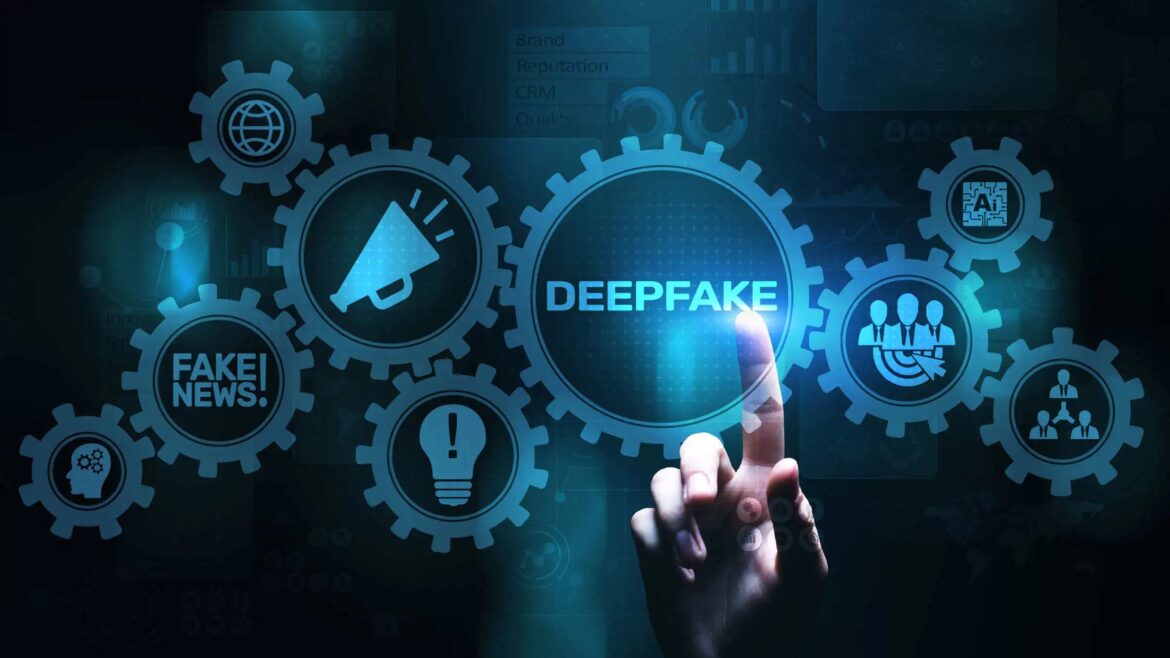Deepfakes are computer-generated videos or images that you can create to manipulate human faces or voices so that they appear deceptively real. From a legal perspective, such creations are more than a little tricky.
Creating deepfakes: What exactly you can create with software
Deepfakes can be fun, especially among friends, and have meme potential. Today, they look amazingly real: faces speak sentences in videos that the real person never said, people appear in scenes they were never in. What used to be possible only in Hollywood can now be achieved with freely available software. But despite all the fascination, the technology is not only powerful—it is also highly sensitive from a legal and ethical standpoint.
- A deepfake is AI-manipulated image, audio, or video material in which one person is replaced by another or simulated in a deceptively realistic manner. Deepfakes are particularly well known, in which the face or voice of a real person is used in a video to make them appear to say or do things.
- The technology behind it is based on neural networks, especially so-called Generative Adversarial Networks (GANs). With these tools, even technically savvy amateurs can create deepfakes. Examples include DeepFaceLab, FaceSwap, and the Zao app.
- DeepFaceLab is probably the best-known open-source tool for deepfakes. It offers great flexibility but also has a complex user interface and is ideal for experienced users with technical training. FaceSwap, another open-source project, offers a slightly more beginner-friendly interface.
- The Chinese app Zao swaps faces in movie scenes in seconds. It is very easy to use, but has a questionable privacy policy.
- Reface, DeepSwap, and Deepswap.ai are commercial, cloud-based services with clear user guidance. They enable face swaps in a matter of minutes—for a fee or with a subscription. You should carefully review the privacy and terms of use policies here.
- To create a deepfake, collect images or videos of the person you want to use in your deepfake. The more images you have, the better the result will be.
- Use the selected software to isolate and analyze the faces of the person in the images. Select a target video or image into which you want to insert the person’s face.
- Using the software, you can insert the person’s face into the target video or image and adjust it.
Risks & legal regulations of deepfakes
Deepfakes can be fun for private purposes, but unfortunately they can also be used to spread false or misleading information, known as fake news. This can lead not only to defamation, but also to political manipulation. The legal situation regarding deepfakes is therefore becoming increasingly strict worldwide. Many countries, including Germany, have enacted special regulations to curb violations of personal rights, cyberbullying, and political disinformation.
- For example, there is also a risk that deepfakes could be used to portray someone in a sexually explicit or embarrassing situation, which could be considered a violation of privacy.
- In Germany, the right to one’s own image is protected by Sections 22 and 23 of the Art UrhG (Art Copyright Act) and the general right of personality in Articles 1 and 2 of the Basic Law. The distribution of deepfakes without the consent of the person concerned can be considered a violation of personal rights, defamation, or even identity theft.
- Erotic or political manipulation without consent is particularly prohibited and may result in civil and criminal penalties.
- It is permitted to create deepfakes for artistic, satirical, parodic, or journalistic purposes. However, some countries, such as Austria, are considering laws to regulate and prohibit the creation and distribution of deepfakes. This could also have an impact on freedom of expression and creative freedom.
- It is important to act ethically when creating and distributing deepfakes and to ensure that they are not used to harm or harm others. Always obtain the express consent of the persons concerned before using their face or voice in a deepfake.
- In addition, you should ensure that the source of a deepfake is clearly labeled to inform viewers that it is a manipulated representation.
- Even if you use deepfakes privately or for entertainment purposes, clear labeling is ethically required. The audience should be able to recognize that it is an artificially generated medium. This not only protects your counterpart, but also your own credibility—for example, in social media posts.
- There are now also sufficient means available to detect deepfakes. Tools such as Microsoft Video Authenticator, Deepware Scanner, Intel’s FakeCatcher, and AI-based filters in social networks analyze pixel changes, light reflections, blinking behavior, and other indications of digital manipulation. These tools help to detect fakes and promote media literacy in the digital age.

